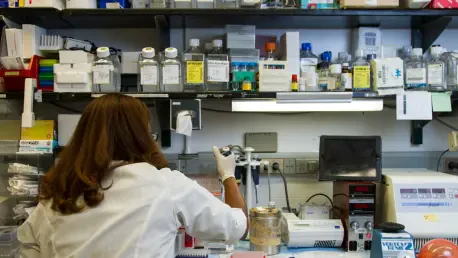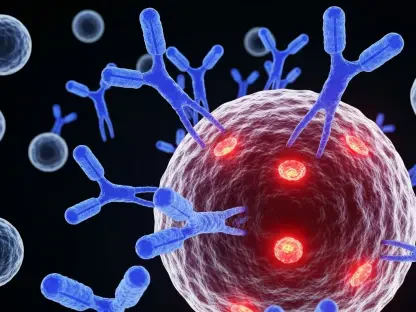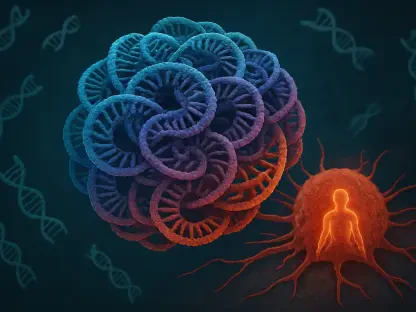Accurate dietary assessment has long been a challenge in nutritional science, hampered by reliance on self-reported data from methods like questionnaires and food diaries. These are often plagued by inaccuracies due to memory lapses or intentional misreporting, and they frequently lack detailed insights into the specific components of processed foods, making precise nutritional analysis difficult. However, there is a potential breakthrough on the horizon in the form of Metagenomic Estimation of Dietary Intake (MEDI), an innovative method developed by Sean Gibbons and his research team at the Institute for Systems Biology. By analyzing DNA remnants found in fecal samples, MEDI could offer a more precise, reliable understanding of dietary consumption. It presents a novel approach to tracking food intake, leveraging the DNA from consumed foods that survives digestion and remains in stool samples, potentially revolutionizing dietary assessment.
The Advent of MEDI
MEDI represents a remarkable advancement by identifying the DNA remnants from consumed food that persist through digestion and remain in stool samples. By mapping this food-derived DNA to sequenced genomes from hundreds of known foods, MEDI can pinpoint specific items consumed and assess their nutritional content with unprecedented detail. This pioneering approach is based on the principle that since diets primarily consist of materials containing DNA—such as plants, fungi, and animals—traces should remain detectable even after digestion. Researchers have validated MEDI through controlled feeding studies, showcasing its ability to quantify intakes of nutrients like protein, carbohydrates, potassium, cholesterol, and vitamin B12 with precision. The verification against reported dietary intake highlights MEDI’s accuracy and its potential to transform the realm of dietary assessment.
Exploring the Mechanism
The mechanism underlying MEDI is rooted in its ability to isolate and identify food-derived DNA amidst the vast majority of bacterial DNA present in stool samples. Although bacterial DNA makes up about 99.9% of the total DNA content in fecal material, MEDI’s innovative design allows researchers to pinpoint the tiny fraction that originates from food. This meticulous focus provides an accurate quantification of various nutrients consumed. Controlled studies demonstrated that even with the overwhelming dominance of bacterial DNA, MEDI successfully matched the reported dietary intake, showcasing its reliability and potential for integration into nutritional analysis. By offering insights into actual dietary habits as opposed to perceived ones, MEDI addresses one of the most significant challenges in nutritional science, paving the way for more accurate dietary assessments.
Limitations and Practicality Concerns
Despite MEDI’s promising capabilities, certain limitations underscore the challenges in its practical application. While immensely innovative, MEDI’s accuracy in estimating certain dietary elements, such as dietary fiber and fat, remains less dependable compared to its precision in other aspects. Skepticism exists among experts like Steven Heymsfield regarding MEDI’s practicality on an individual level in clinical environments due to higher costs and increased time demands than traditional survey methods. The requirement for specialized analysis makes it challenging to incorporate MEDI routinely into clinical dietary assessments. As a result, while MEDI offers groundbreaking potential, its integration into common use still faces obstacles that require further refinement and resource management to overcome.
MEDI in Broader Research Applications
Beyond individual dietary assessments, MEDI extends its utility into broader research contexts, particularly in analyzing dietary patterns related to health conditions such as metabolic syndrome. Through its application, MEDI confirmed previously established dietary correlations, including increased meat consumption and decreased fruit and vegetable intake among individuals with metabolic syndrome, providing validation and deeper insights into these patterns. This capability allows MEDI to transcend conventional assessment tools, reinforcing established findings while uncovering novel aspects of dietary influences on health. Its deployment in research settings signifies its potential to enhance current understanding of diet-related conditions, especially where detailed analysis of dietary intake is crucial for deciphering complex health phenomena.
Future Prospects for Dietary Analysis
Looking forward, MEDI is poised for advancement, with endeavors focused on refining its accuracy and expanding its applicability in dietary analysis. As more food genomes are sequenced and integrated into MEDI’s database, its precision and scope are expected to improve substantially. This will likely make MEDI a more powerful tool in nutritional ecology and human health research, offering an evolved approach to understanding the interplay between diet, the gut microbiome, and overall health. The implications for MEDI’s development in unraveling detailed dietary impacts are vast, promising to redefine dietary assessment on multiple fronts. With ongoing improvement, MEDI stands to significantly enhance the comprehension of the intricate relationship between dietary habits and health, further cementing its role in nutritional science’s future.









